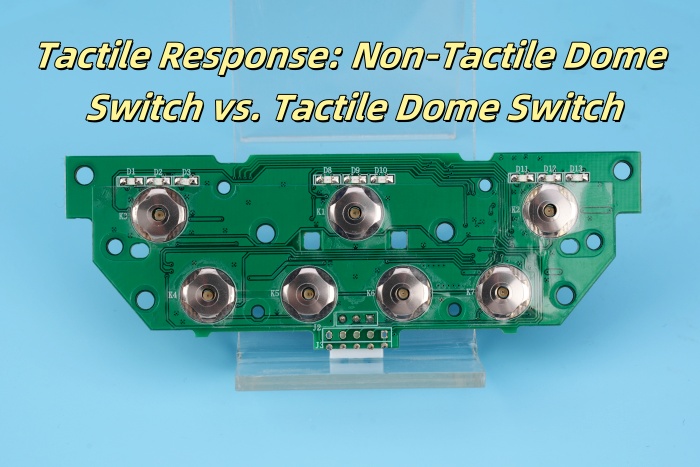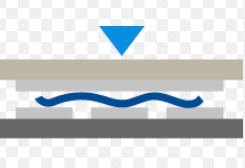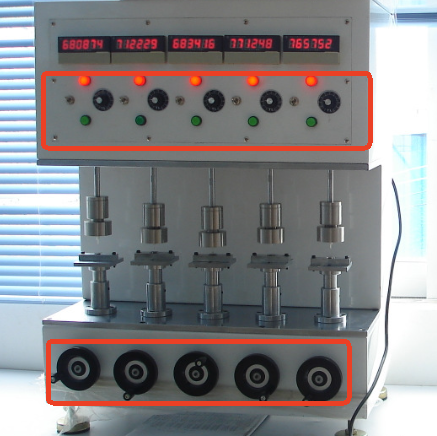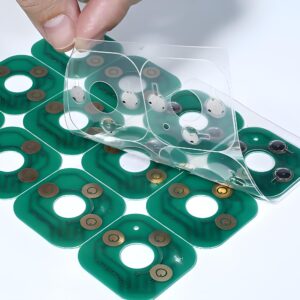What Is Tactile Response in Dome Switches?
Tactile response refers to the physical sensation users feel when pressing a switch. It provides confirmation of a successful action. In dome switches, tactile response is either a noticeable click or a soft feedback when the switch is pressed. This feedback plays a significant role in many industries, as it helps users feel assured that their action has been registered.
This feature adds precision and clarity to tasks. For example, in medical equipment, tactile response ensures accurate data entry. In consumer electronics, it enhances user satisfaction. The physical feedback offered by tactile response aligns with our natural instinct to rely on touch for confirmation. This feature is essential in scenarios where users need to focus on their tasks without visual cues.

How Does a Tactile Dome Switch Differ From a Non-Tactile Dome Switch?
Tactile dome switches stand out because they produce a noticeable click when pressed. This click signals to users that their input has been successfully registered. This feedback is valuable in applications where precision is critical. Non-tactile dome switches, on the other hand, lack this physical click. They operate more smoothly, with less force required, and are often chosen for applications where quiet operation is necessary.

The choice between tactile and non-tactile dome switches often depends on the specific needs of the application. Tactile dome switches are commonly used in environments where accurate input and user feedback are essential. Non-tactile dome switches are more suited for applications requiring silent or continuous operation, such as remote controls or gaming devices.
Why Choose a Tactile Dome Switch for Your Application?
Tactile dome switches provide a distinct advantage in scenarios where accuracy matters. The tactile feedback reduces input errors by signaling that the action has been completed. This confirmation is vital in environments such as industrial control panels, medical devices, and automotive systems.
For example, in a control panel for heavy machinery, tactile switches allow operators to stay focused on their tasks. They don’t need to look at the switch to confirm its activation. Similarly, in medical devices, the tactile response ensures precise data entry even in high-pressure situations.
Moreover, tactile dome switches enhance the user experience by offering a satisfying feedback mechanism. This tactile sensation improves the perceived quality of a device, adding value to products that rely on precision and reliability.
Advantages of Non-Tactile Dome Switches
Non-tactile dome switches shine in environments that prioritize smooth and silent operation. Unlike tactile switches, they don’t produce an audible or physical click, making them ideal for settings where noise can be distracting or undesirable.
Consider their use in modern office keyboards. Many employees prefer quieter keyboards that allow for seamless typing without disturbing coworkers. Similarly, in gaming devices, non-tactile switches provide a faster response time and smoother operation, enhancing the gaming experience.
These switches are also more durable because their design eliminates the mechanical wear associated with tactile feedback. This longevity makes them a cost-effective choice for devices that require frequent or continuous use.
Key Differences Between Tactile and Non-Tactile Dome Switches
The main difference between tactile and non-tactile dome switches lies in user feedback. Tactile switches provide physical feedback in the form of a click, while non-tactile switches offer a smooth, noiseless actuation.
Tactile switches are often favored in applications where users need clear confirmation of an action. They are common in medical equipment, industrial machines, and professional control systems. Non-tactile switches are preferred in environments requiring silent operation, such as consumer electronics and home automation systems.
Another difference is the level of force required. Tactile switches typically need more pressure to actuate, while non-tactile switches are smoother and require less effort. These distinctions make each type suitable for specific use cases, depending on the operational needs of the device.
Applications Best Suited for Tactile Dome Switches
Tactile dome switches are essential in industries where accuracy and feedback are non-negotiable. One prominent application is in the medical field, where precise data entry can have life-altering implications. Devices such as ventilators, monitors, and diagnostic tools rely on tactile feedback to ensure accurate operation.
Industrial applications also benefit from tactile switches. In control panels for heavy machinery, the physical feedback from these switches assures operators that their inputs have been registered. This feedback reduces errors and enhances safety, especially in environments with high stakes.

Tactile dome switches are also used in professional-grade consumer electronics. Products like high-end keyboards, audio equipment, and specialized gadgets include tactile switches to provide a premium user experience. These switches stand out for their reliability and clear actuation feedback.
When to Use Non-Tactile Dome Switches Over Tactile Ones?
Non-tactile dome switches are ideal for applications prioritizing silence and smooth operation. In office environments, keyboards with non-tactile switches create a quieter workspace, boosting productivity. Remote controls for TVs and audio systems often feature non-tactile switches to avoid clicking noises that could disrupt the user’s experience.
Gaming devices also benefit from non-tactile switches. Gamers prefer fast and smooth actuation for uninterrupted gameplay. Non-tactile dome switches deliver this advantage without compromising durability or performance.
In home automation, non-tactile switches are preferred for their discreet functionality. Smart light switches, for example, often use non-tactile dome switches to provide seamless, noiseless operation. These switches align perfectly with the demand for a silent and efficient user experience.
Factors to Consider When Selecting Between Tactile and Non-Tactile Dome Switches
Choosing the right type of dome switch depends on various factors. First, consider the application’s specific needs. For tasks requiring precision and feedback, tactile dome switches are the best choice. They ensure users feel confident in their inputs.
Noise levels are another crucial factor. Non-tactile switches are better suited for quiet environments. They provide smooth actuation without the audible click associated with tactile switches.
Durability is also essential. Non-tactile switches generally have fewer mechanical parts and are less prone to wear and tear. This makes them a better choice for applications involving frequent use.
Lastly, think about user preferences. Some users value the assurance of tactile feedback, while others prefer the seamless operation of non-tactile switches. Understanding these preferences ensures that the chosen switch aligns with the needs of the end-users.
If you do not know which kind of dome switch is suitable for your project, welcome to contact with best technology, we are the expert in this industry. With over 18 years in metal dome and dome array manufacturing, we have served more than 1000 customer all over the world. We can custom metal domes for your dome switch, whatever for non-tactile dome switch or tactile dome switch. E-mail us at sales@metal-domes.com!






